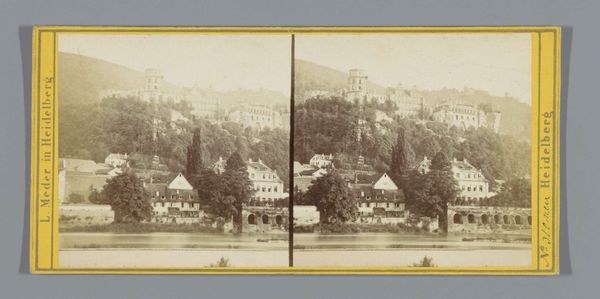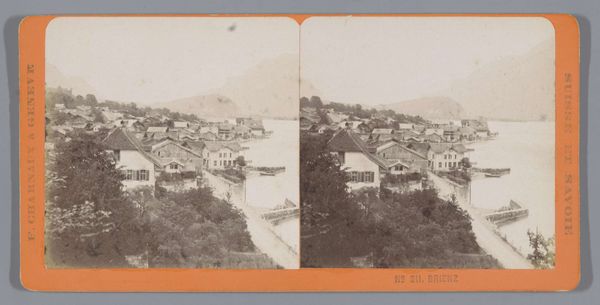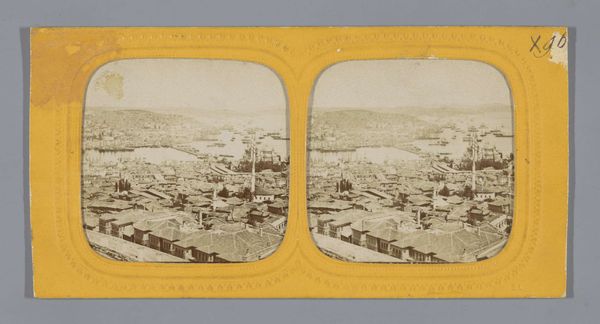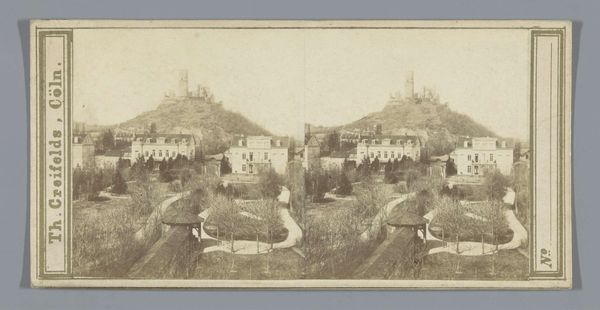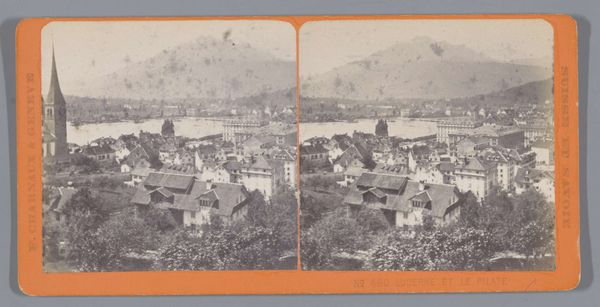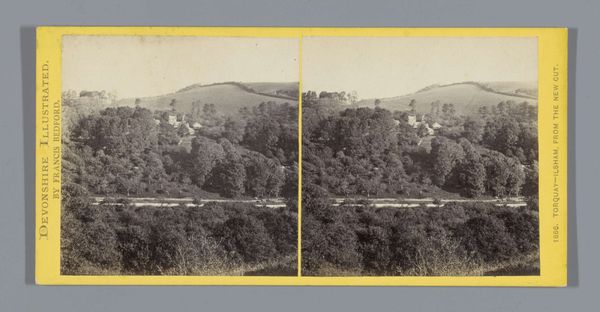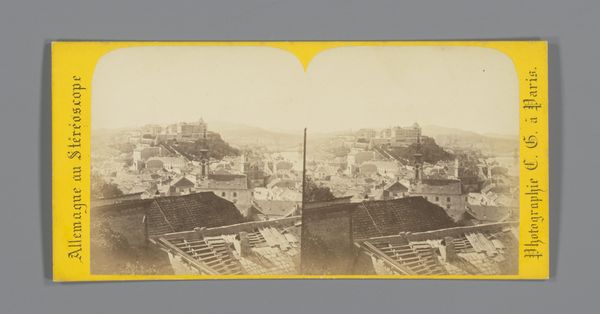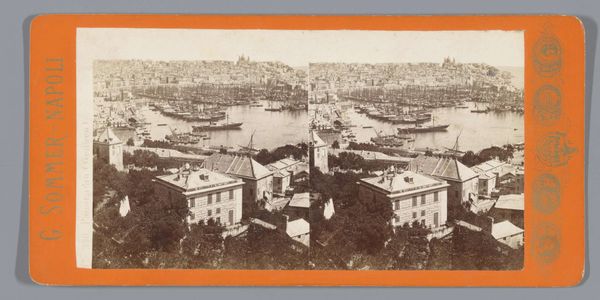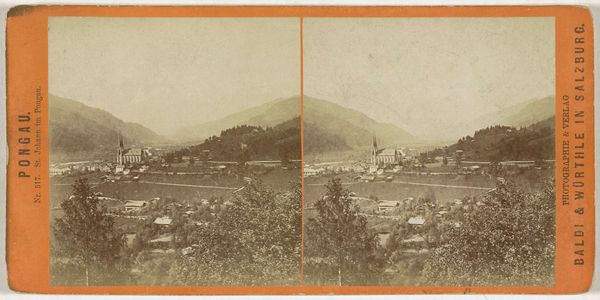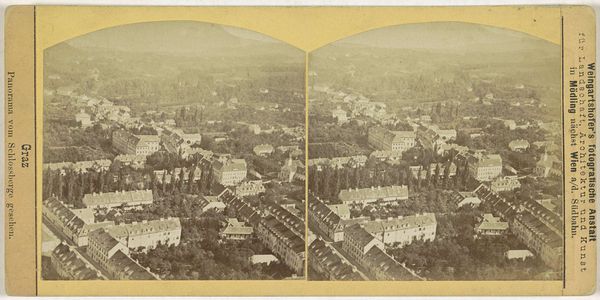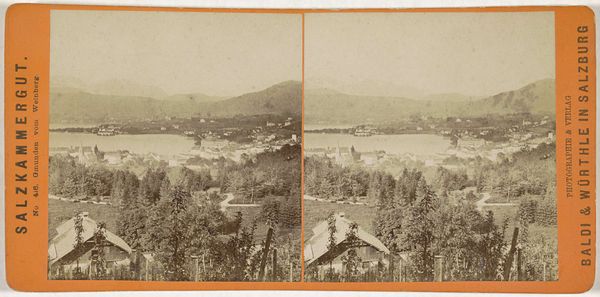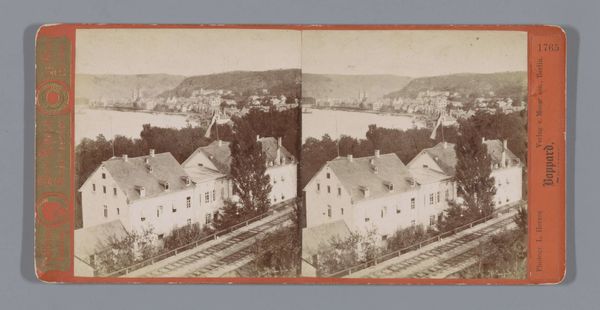
print, photography
#
pictorialism
# print
#
landscape
#
photography
#
cityscape
Dimensions: height 86 mm, width 173 mm
Copyright: Rijks Museum: Open Domain
Editor: This stereoscopic print, "Gezicht op Thun, Zwitserland," is attributed to Eugène Hanau and dates between 1880 and 1915. I am really drawn to how it presents the image in a seemingly neutral manner, just trying to give us a truthful depiction of this Swiss town. How would you interpret such an objective portrayal in that era? Curator: This photograph exemplifies how the pictorialist movement embraced photography's potential to represent landscapes and cityscapes. Think about how this image circulates—a mass-produced print, consumed as a collectible view of Switzerland. This feeds into the rise of tourism and a burgeoning middle class eager to possess representations of "authentic" places. Consider the act of viewing: how does the stereoscopic format affect our perception of reality versus representation here? Editor: The stereoscopic view certainly makes it feel more "real," more immersive, than a flat image would. So is it fair to say it’s selling not just a picture, but a perceived experience? Curator: Exactly! These photographs weren't just documenting Thun; they were constructing and selling an idea of Switzerland – a picturesque, "civilized" landscape. The format adds to this idea by providing a sense of being there and experiencing its authenticity. We must ask, though: authentic for whom and at what cost? What gets excluded? Editor: That's a good point, thinking about the consumption of imagery alongside societal changes like tourism… It shows that seemingly "objective" art always has an agenda behind it. Curator: Precisely. Considering photography's role in shaping our perceptions of place reveals much about the cultural values and power structures of the period. I appreciate how this dialogue has underscored the impact that photography has in reinforcing idealized images, often masking complex realities.
Comments
No comments
Be the first to comment and join the conversation on the ultimate creative platform.
